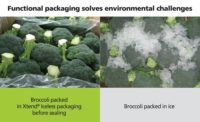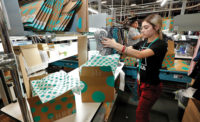The impact of COVID-19 will likely last for quite a while and with it, the rise of in-home food and beverage consumption will continue for the foreseeable future. While the health and immune-boosting properties of fresh produce brought growth to the produce category, the majority of consumers are now seeking out frozen and pantry-friendly fruits and vegetables much more than they did before the outbreak.
Consumers are still actively buying fresh foods, but they’re also prioritizing the purchase of healthful foods that come with the added benefit of an extended shelf-life. Produce is one example of a health-oriented category that consumers are actively buying canned, bottled or frozen across the store.
North Americans have continued to pad their pantries with frozen and shelf-stable produce more than years prior. For example, fresh pineapple sales in the U.S. are down 3% so far this year, while frozen and shelf-stable pineapple sales are up 39% and 29%, respectively, stated a Nielsen report.
During the week ending July 5, the increased everyday purchasing plus holiday demand drove gains of 9.1% for fresh produce, reports IRI. Frozen and shelf-stable fruits and vegetables continued to see double-digit gains, with frozen at +24.4%. Year-to-date, fresh produce sales are up 10.6% over the same time period in 2019. Frozen fruit and vegetables increased the most, up 28.0% year-to-date. This is in spite of limited assortment of frozen vegetables and fruit, down -6.7% in average items per store selling.
Producers of fresh produce will need to align with the potential rising demand for products of local origin. At least 15% of surveyed Americans buying local products (products from within the U.S.) are doing so more than before COVID-19, said Nielsen. The more that growers and suppliers of produce can promote the specifics of which country, state and even farm or neighborhood their product originates from, they can provide complete transparency to consumers who may fear the risks associated with products that have had too many global touchpoints.











